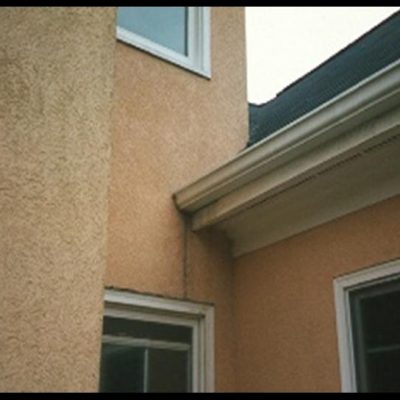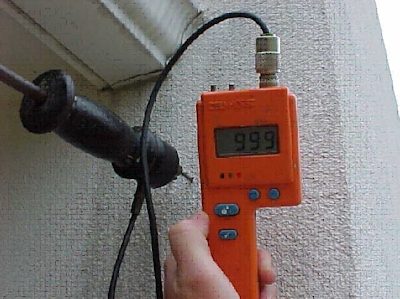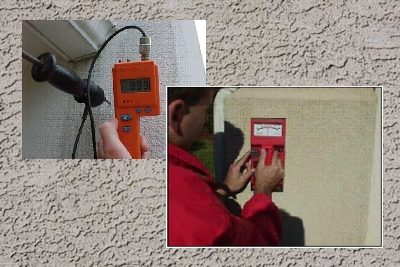What Is Stucco
From Wikipedia
Stucco or render is a material made of an aggregate, a binder, and water. Stucco is applied wet and hardens to a very dense solid. It is used as a coating for walls and ceilings and for decoration. Stucco may be used to cover less visually appealing construction materials such as concrete, cinder block, or clay brick and adobe
Stucco Composition
The difference in nomenclature between stucco, plaster, and mortar is based more on use than composition. Until the later part of the nineteenth century, it was common that plaster, which was used inside a building, and stucco, which was used outside, would consist of the same primary materials: lime and sand (which are also used in mortar). Animal or plant fibers were often added for additional strength. In the later part of the nineteenth century, Portland cement was added with increasing frequency in an attempt to improve its durability. At the same time, traditional lime plasters were being replaced by gypsum plaster. Stucco used as an exterior coating on a residential building. Traditional stucco is made of lime, sand, and water. Modern stucco is made of Portland cement, sand, and water. Lime is added to decrease the permeability and increase the workability of modern stucco. Sometimes additives such as acrylics and glass fibers are added to improve the structural properties of the plaster. This is usually done with what is considered a one-coat stucco system, as opposed to the traditional three-coat method. Lime stucco is a relatively hard material that can be broken or chipped by hand without too much difficulty. The lime itself is usually white; color comes from the aggregate or any added pigments. Lime stucco has the property of being self-healing to a limited degree because of the slight solubility of lime (which in solution can be deposited in cracks. where it solidifies). Portland cement stucco is very hard and brittle and can easily crack if the base on which it is applied is not stable. Typically its color was gray, from the innate color of most Portland cement, but white Portland cement is also used. Today’s stucco manufacturers offer a very wide range of colors that can be mixed integrally in the finish coat.
Traditional Stucco
As a building material, stucco is a durable, attractive, and weather-resistant wall covering. It was traditionally used as both an interior and exterior finish applied in one or two thin layers directly over a solid masonry, brick or stone surface. The finish coat usually contained an integral color and was typically textured for appearance. Then with the introduction and development of heavy timber and light wood-framed construction methods, stucco was adapted for this new use by adding a reinforcement lattice, or lath, attached to and spanning between the structural supports and by increasing the thickness and number of layers of the total system. The lath added support for the wet plaster and tensile strength to the brittle, cured stucco; while the increased thickness and number of layers helped control cracking. The traditional application of stucco and lath occurs in three coats — the scratch coat, the brown coat and the finish coat. The two base coats of plaster are either hand-applied or machine sprayed. The finish coat can be toweled smooth, hand-textured, floated to a sand finish or sprayed. Originally the lath material was strips of wood installed horizontally on the wall, with spaces between, that would support the wet plaster until it cured. This lath and plaster technique became widely used. In exterior wall applications, the lath is installed over a weather-resistant asphalt-impregnated felt or paper sheet that protects the framing from the moisture that can pass through the porous stucco. Following World War II, the introduction of metal wire mesh, or netting, replaced the use of wood lath. Galvanizing the wire made it corrosion resistant and suitable for exterior wall applications. At the beginning of the 21st century, this “traditional” method of wire mesh lath and three coats of exterior plaster is still widely used. In some parts of the United States (California, Arizona, New Mexico and Florida), stucco is the predominant exterior for both residential and commercial construction. Baroque stucco decorations of the main nave of the Bright Mount Monastery basilica, 1693-1695.[1]Stucco has also been used as a sculptural and artistic material. Baroque and Rococo architecture makes heavy use of stucco. Examples can be found in churches and palaces, where stucco is mostly used to provide a smooth, decorative transition from walls to ceiling, decorating and giving measure to ceiling surfaces. Stucco is an integral part of the art of belcomposto, the Baroque concept that integrates the three classic arts, architecture, sculpture, and painting. Since stucco can be used for decoration as well as for figurative representation, it provides an ideal transitive link from architectural details to wall paintings such as the typically Baroque trompe l’oeil ceilings, as in the work of the Wessobrunner School. Here, the real architecture of the church is visually extended into a heavenly architecture with a depiction of Christ, the Virgin Mary or the Last Judgment at the center. Stucco is used to form a semi-plastic extension of the real architecture that merges into the painted architecture. Islamic art makes use of stucco as a decorative means in mosques and palaces. Indian architecture knows stucco as a material for sculpture in an architectural context. It is rare in the countryside. Because of its “aristocratic” appearance, Baroque-looking stucco decoration was used frequently in upper-class apartments of the 19th and early 20th century. Beginning in the 1920s, stucco, especially in its Neo-Renaissance and Neo-Baroque materialization, became increasingly unpopular with modern architects in some countries, resulting in a widespread movement to remove the stucco from tenements. Stucco was still employed in the 1950s in molded forms for decorating the joints between walls and ceilings inside houses. It was generally painted the same color as the ceiling and used in designs where a picture rail or rat rail was in use.
Modern Stucco
Modern stucco is an exterior cement plaster wall covering. It is usually a mix of sand, Portland cement, lime and water, but may also consist of a proprietary mix of additives including fibers and synthetic acrylics that add strength and flexibility. Modern synthetic stucco can be applied as one base layer and a finish layer, which is thinner and faster to apply, compared to the traditional application of three-coat stucco.As with any cement-based material, stucco must be reinforced to resist movement cracking. Plastic or wire mesh lath, attached with nails or screws to the structural framing, is embedded into the base coat to provided stiffening for the stucco. One method often used to help conceal the smaller surface cracks that may appear is the application of one of a variety of pre-mixed acrylic finishes. Flexible acrylic finishes have the ability to stretch and bridge over cracks, improving appearance and limiting the passage of moisture behind the stucco. Where stucco is to be applied to a structure of wood-framing or light-gauge steel framing, the framing is protected from moisture damage by applying a vapor-permeable, water-resistant weather barrier; typically an asphalt-saturated paper or one of a variety of manufactured plastic-based sheets, known as “building wraps” or “stucco wraps”. The properties of the weather barrier must not only protect the framing from rain and moisture, but at the same time allow the free passage of any water vapor generated inside the building to escape through the wall.A wide variety of stucco accessories, such as weep screeds, control and expansion joints, corner-aids and architectural reveals are sometimes also incorporated into the lath. Wire lath is used to give the plaster something to attach to and to add strength. Types include expanded-metal lath, woven-wire lath, and welded-wire lath. The first layer of plaster is called a “scratch coat,” consisting of plastic cement and sand. A brush is used to scratch the surface horizontally or in a crisscross pattern to provide a key for the second layer. The first coat is allowed to dry (cure) before the second layer is applied. The next layer is called the “brown coat” or leveling coat. It also consists of sand, cement, and lime. It is leveled with tools called “darbies,” “rods,” and “federeges,” scraped smooth, and floated to provide a smooth, even surface onto which the finish coat is applied. It is then allowed to dry (cure) for 7-10 days minimum to allow “checking” (shrinkage) and cracking to take place. If applied during very dry weather, the layers of stucco are sprayed with water for one or more days to keep a level of moisture within the stucco while it cures, a process known as “moist curing.” If the stucco dries too soon, the chemical hardening (“hydration”) will be incomplete, resulting in a weaker and brittler stucco. The final, exterior layer is the final layer is the “finish coat,” of which there are two recommended types: 1. Color Coat is a colored sand, cement, and lime mixed finish and is typically 3 mm (1/8″) thick. It is applied over the second coat (brown coat) and can be floated with water for a sandy finish or textured over with a trowel to create various styles of finishes. Premixed, bagged stucco is gaining in use and is available in coarse graded sand and finer graded sand for creating a variety of toweled finishes; it is available in a variety of colors. 2. Acrylic Finish is an acrylic-based finish from 1.0 mm to 4.0 mm thick. It can be applied in many ways; it is the most recommended finish for long-lasting quality. It also can be ordered in any color. (Hard Coating is another method of adding a finish to the stucco wall, although no longer recommended. In the 1960s and 1970s people added a variety of materials like glass chunks, stones or marble into the wet stucco wall. This kind of finish coat is very heavy and inflexible and is hard to repair.)
Stucco Siding
Stucco is valued as a siding material for its attractiveness and durability–portland cement can last indefinitely without requiring maintenance. It is often (but certainly not limited to) use on Spanish-style homes. Stucco can be directly applied to brick and concrete, or applied to a lath (paper or wire mesh) over wood frame or other material. While nothing prevents anyone from painting stucco or white-washing it with cement, these materials generally do not adhere to stucco longer than two or three years, requiring constant re-application. Removing these materials in order to re-stucco requires expensive sandblasting. Paint also prevents the concrete from breathing. A stucco home can be re-stuccoed with a plaster that has the desired pigment added





Recent Comments